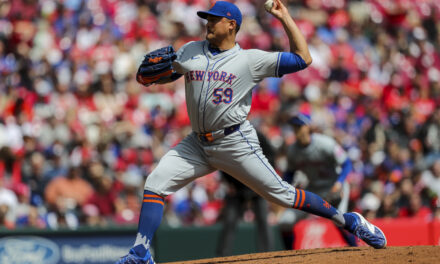Yusei Kikuchi
Position: SP
Bats/Throws: L/L
Age: 30 (6/17/1991)
Traditional Stats: 29 G, 7-9, 4.41 ERA, 157.0 IP, 163 SO, 1.318 WHIP
Advanced Stats: 1.1 WAR, 94 ERA+, 4.61 FIP, 9.3 BB%, 24.5 K%
Rundown
Yusei Kikuchi was a surprise all-star for the equally as surprising Seattle Mariners last season. The 30-year old southpaw came over from Japan for the 2019 season, and showed signs of why he was brought over in the first place.
When he first came over to MLB he struggled. In his first two years with Seattle, he pitched to a 5.46 ERA in 2019. In 2020, he only made nine starts pitching to a 5.17 ERA. This past season was his best year in his short three-year MLB stint, in terms of traditional statistics. He pitched to his career-bests in ERA, WAR, H/9, and SO/9.
A deeper dive into his numbers this past season raises a bit of a red flag. Per Baseball Savant, Kikuchi ranked below the 22nd percentile in the following categories: Avg. Exit Velocity, Max. Exit Velocity, Hard Hit %, xwOBA, xERA, xBA, xSLG. Basically, for the most part, his traditional statistics may not tell the whole story of how last year actually went.
Kikuchi’s xERA last season was 5.20, this number is right around what he posted during his miserable 2019 season. The main issue for Kikuchi last season was giving up hard contact. His hard-hit rate % against was one of the worst in the league (third percentile). The main reason for this? Opposing hitters were constantly barreling up his pitches (eighth percentile), resulting in hard and solid contact. This is where most of his issues originated. Additionally, Kikuchi struggled so much down the stretch he was pulled from Seattle’s rotation. Over his last 10 appearances, he posted a 6.22 ERA while losing velocity and spin on some of his pitches.
It was not all bad this past season. As mentioned above, he posted career-bests in a few different areas. The most noticeable being his strikeout rate. For the first time in his career, including overseas, Kikuchi was a strikeout-plus per innings pitched pitcher. The main reason for this, a 60th percentile chase rate and 63rd percentile whiff rate.
As for pitch selection, Kikuchi can throw the kitchen sink at you. He has a four-seam fastball (35.6% usage at around 95 MPH), cutter (35% usage), slider (18.9% usage), and changeup (10.5% usage). His best pitch is his slider which had an xBA of .238 or lower the past two seasons.
As you can see, this past season Kikuchi threw his fastball just as much as his cutter. What’s interesting is two seasons ago, he threw his cutter 40% of the time, the most of any of his pitches. Worth noting, this pitch performed much better in 2020 than this season (.224 xBA to .313 xBA this year).
In order for Kikuchi to have a season where he really puts it all together, two things must happen. He must re-find his success with his cutter which he had in 2020 and also he has to limit hard contact. Each is easier said than done, but with the right coaching, he has the tools to become a very valuable number three or four starter. Something the New York Mets desperately need.
Contract
Kikuchi came over from Japan on a three-year, $43,000,000 contract. The contract had a four-year extension built-in, but it was declined by the Mariners and Kikuchi then subsequently declined the one-year, $13,000,000 player option. Thus, he finds himself on the open market.
Given his struggles and subsequent boot from the rotation, it is a bit of a surprise he declined the $13,000,000 player option. This is because it does not appear he will get more than that in annual value on the open market. Nonetheless, a good projection for what his next contract may look like is a shorter-term deal, one to three years for a figure in the low double digits. Let’s say a two-year deal in the vicinity of $11,000,000.
Recommendation
It is extremely apparent the New York Mets need starting pitching. As it stands, the Mets’ 40-man roster consists of starting pitchers Jacob deGrom, Taijuan Walker, Carlos Carrasco, David Peterson, Joey Lucchesi (injured), Trevor Williams, and Jordan Yamamoto. Would Kikuchi be the right guy to give them more depth?
As the above shows, bringing in Kikuchi would bring some risk. You would be betting on the fact that pitching coach Jeremy Hefner would be able to help him start limiting hard contact and fine-tune his cutter back to what it once was. You would also be betting on the fact the fatigue and decline in play he showed last season is not something that will continue.
Overall, Kikuchi is certainly an option, and one that could pay off big time at the money he figures to be commanding. However, there is a ton of risk with bringing him in. The Mets are in dire need of starting pitching, especially a back-end of the rotation type who can eat up innings as Kikuchi can. There are, however, several better options on the table. Kikuchi should not be the first choice but can work out as a fail-safe.
















